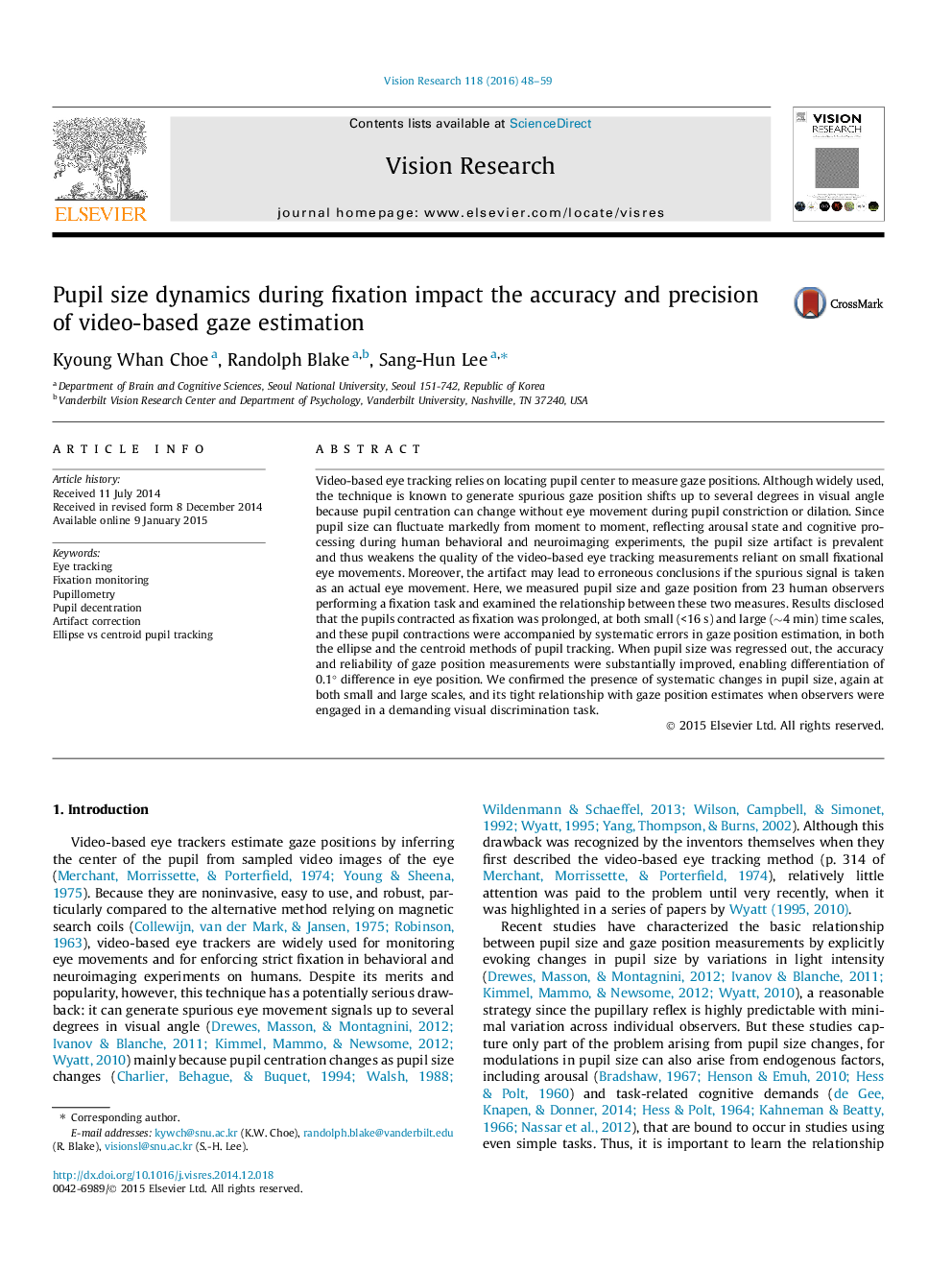| Article ID | Journal | Published Year | Pages | File Type |
|---|---|---|---|---|
| 4033580 | Vision Research | 2016 | 12 Pages |
•Video-based eye trackers can produce contaminated data owing to pupil decentration.•The pupil size artifact can arise endogenously during fixation without stimulus change.•The artifact also appears when one performs a difficult visual discrimination task.•We demonstrate that this artifact can be easily and effectively regressed out.
Video-based eye tracking relies on locating pupil center to measure gaze positions. Although widely used, the technique is known to generate spurious gaze position shifts up to several degrees in visual angle because pupil centration can change without eye movement during pupil constriction or dilation. Since pupil size can fluctuate markedly from moment to moment, reflecting arousal state and cognitive processing during human behavioral and neuroimaging experiments, the pupil size artifact is prevalent and thus weakens the quality of the video-based eye tracking measurements reliant on small fixational eye movements. Moreover, the artifact may lead to erroneous conclusions if the spurious signal is taken as an actual eye movement. Here, we measured pupil size and gaze position from 23 human observers performing a fixation task and examined the relationship between these two measures. Results disclosed that the pupils contracted as fixation was prolonged, at both small (<16 s) and large (∼4 min) time scales, and these pupil contractions were accompanied by systematic errors in gaze position estimation, in both the ellipse and the centroid methods of pupil tracking. When pupil size was regressed out, the accuracy and reliability of gaze position measurements were substantially improved, enabling differentiation of 0.1° difference in eye position. We confirmed the presence of systematic changes in pupil size, again at both small and large scales, and its tight relationship with gaze position estimates when observers were engaged in a demanding visual discrimination task.
